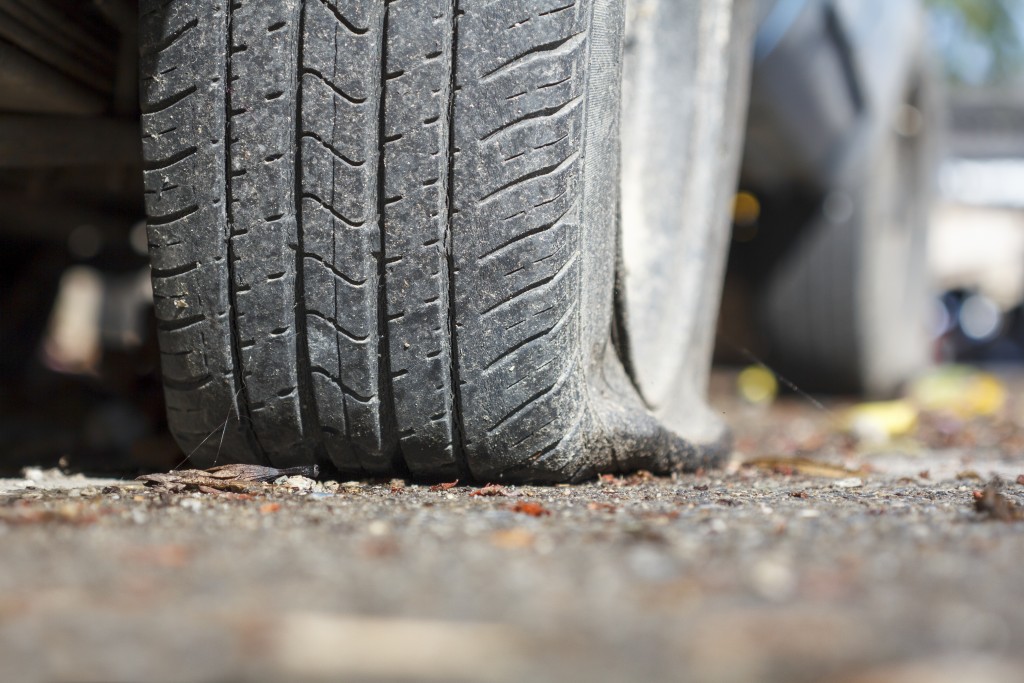Can You Drive on a Flat Tire?


The flap, flap, flap sound is unmistakable: You’ve got a flat tire. Or perhaps just as you’re getting ready to leave for work in the morning, you notice one of your tires is drooping. However it happens, you’re probably thinking, now what? Can you drive a flat tire?
Here’s the short answer: No.
Unless you happened to get your flat tire in the parking lot of a tire service centre or a gas station with an air pump, no. When you get a flat tire, there are only a few choices. You can use an emergency inflator kit (if the tire has a slow leak), put the spare on or call for a tow. REMEMBER: always get to a safe location before changing the tire, using your remote inflator or calling for a tow, even if you have to drive on the flat for a short distance.
If you don’t have roadside assistance or you don’t know how to change a tire, it might be tempting to see if you can inch along to the nearest service centre, but it’ll pay off in the long run if you don’t drive a flat tire, and here’s why:
1. You could damage the tire beyond repair
Tire manufacturers recommend replacing a tire that is flat or damaged with the spare, and to visit a tire service centre right away. If there is no air or not enough air in the tire (which is needed to support the weight of your vehicle), it can cause ‘internal structural damage,’ meaning the material inside the tire can get damaged beyond repair, while the external problem—that little screw or nail in the tread—could have been repaired.
If the flat was caused by a puncture to the tread of up to ¼” in diameter, according to industry guidelines, it can generally be repaired. For passenger tires, large cuts, sidewall punctures and tires with internal damage generally need to be replaced, and you can only see internal damage after the tire has been dismounted.
2. You could damage the rims
Driving a flat tire that’s completely underinflated means you’re driving on your rims, which means you’re probably bending or totally damaging your rims.
3. You could damage your vehicle
Driving on a seriously degraded flat tire for a long period can actually cause a fair extent of damage to your vehicle. As the tire itself brakes apart, separates from the rim and begins to flail around the tire wheel, important (and expensive) components such as brake lines, rotors, fenders and suspension parts are apt to get seriously damaged.
4. You could lose control and seriously hurt yourself or others
If the first three reasons don’t grab you, hopefully this one will. Tire failure can lead to unsafe handling and even loss of vehicle control. Damage to brake lines or suspension components can also cause erratic vehicle behaviour. Both of which could lead to an accident.
Do you have a low or flat tire that needs inspecting, repairing or replacing? Visit one of our Kal Tire locations near you. If your flat tire was purchased at Kal and it can be repaired, we’ll do it for free as part of our awesome Customer Care Plan.


